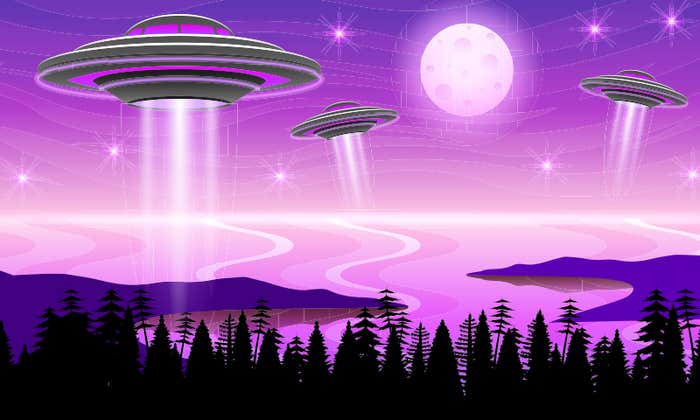When Carl Sagan, the late astronomer and original Cosmos host, published his first novel, Contact, in 1985, Studs Terkel, the long-time radio broadcaster, asked him a month later to chat with him. Their subject, of course, was aliens, and the question of whether we’d ever establish good relations with them.
In their conversation—which Blank on Blank, a nonprofit dedicated to preserving American interviews, republished on Tuesday—Sagan said director Steven Spielberg made “an important step forward” in his films: In ET and Close Encounters of the Third Kind, Spielberg depicted aliens as benign, social beings. The films, Sagan said, countered a tendency to xenophobically treat aliens as hostile. But Spielberg’s shortcoming, according to Sagan, was in anthropomorphizing—his aliens took on slight variations of the human body type “when the evolutionary record is clear that extraterrestrials would be very different from us”—and, if they’re reaching Earth, much brighter, too. In Spielberg’s films, said Sagan, “they’re not awfully smart. Sweet—but not smart.”
In Contact, of course, the story is quite different—Sagan’s aliens aren’t anthropomorphic, are much more advanced than humans, and are benevolent. Turkel said, “You, Carl Sagan—scientist, astronomer—enlighten me. You think that indeed there may be some sort of intelligence out there?” Sagan was careful not to sound too assured. “May—surely. Surely may,” Sagan replied. “There are a lot of potential abodes for life,” revolving around stars in our own galaxy and in galaxies far from us.
Their conversation also touched on topics that are still quite contentious today, like the compatibility of religion and science. One question unasked, though, was just how large life in the cosmos might be. Could a living creature be as big as a galaxy?
Watch the wonderful animation of Sagan’s interview with Turkel, and then read astrophysicist Gregory Laughlin’s Nautilus story, published today, about what the size of life elsewhere in our universe could be.

Brian Gallagher is an associate editor at Nautilus. Follow him on Twitter @bsgallagher.






























